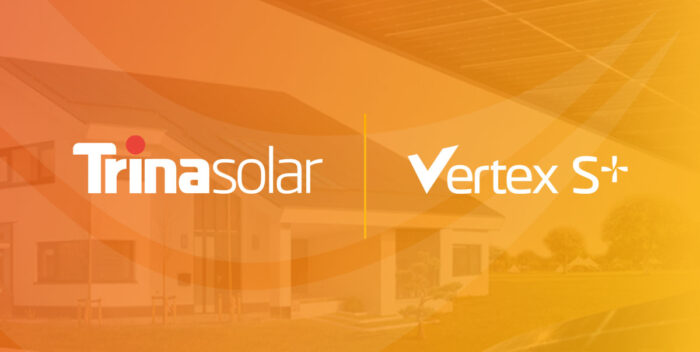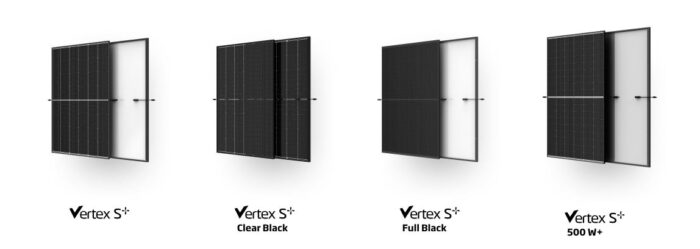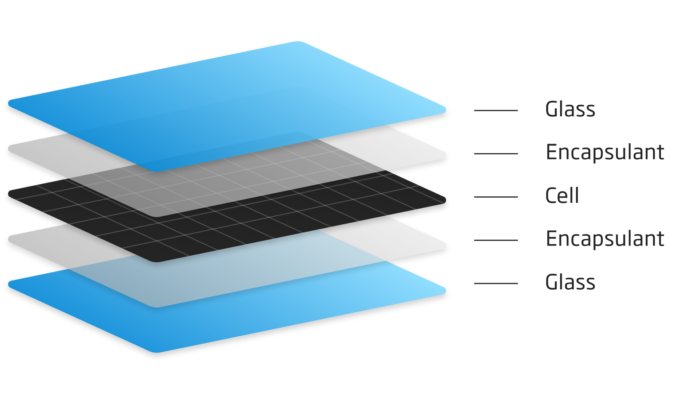
Ten Key Questions to Trinasolar about the Vertex S+ Rooftop Portfolio
(Including one from us)
Post by Hazel Sturgess | 01/08/2024
6-Minute Read
At Intersolar this year, we asked our manufacturing partners,
"What are you most proud of?" Trinasolar’s answer came without hesitation about the Vertex S+ portfolio,
“We have a comprehensive rooftop portfolio that covers just about every application for Europe,” replied Klaus Hofmeister, Product Marketing Manager.
The Vertex S+ portfolio was designed for a range of different applications based on feedback from installers and companies across Europe. The family of solar PV modules shares Trina’s n-type i-TOPCon technology; they benefit from dual glass protection for exceptional durability and resilience, and come with a 30-year power warranty and a 25-year product warranty.
With the arrival of the Full Black PV modules at CCL, our stock of the four-module series is complete and interest in the range is surging. Here are some of the questions you’ve put to the CCL and Trinasolar teams:

What are the differences between the four solar panels in the Vertex S+ series, and where should I be using them?
Vertex S+ NEG9R.28: this monofacial configuration has a white rear encapsulant for high performance in high-temperature environments. It boasts a maximum power output of 455W and is designed for residential applications.
Vertex S+ Full Black NEG9R.25: with a maximum output power of 450W, this residential module incorporates the black design concept into every detail, using black cells, black frames, black encapsulants and thinner wires to achieve its high-end aesthetic.
Vertex S+ Clear Black NEG9RC.27: this is a bifacial module offering a maximum power output of 445W, plus additional energy yield from the rear side of the cells, (depending on the mounting situation). This module is perfect for carports but can also be used on other rooftops.
Vertex S+ 500W+ NEG18R.28: Designed specifically for C&I installations, this solar PV module offers a maximum output power of 510W. Thanks to its electrical characteristics, it allows you to optimise cost for C&I rooftops and lower the Levelized Cost of Electricity (LCOE). Its low specific weight is also an advantage in handling and installation. A perfect option to install more power per module, with adapted system design, and to lower Balance of System (BOS) costs.
What’s the weight of the Clear Black product?
At 21kg, the Clear Black module is 0.8 kg lighter than Trinasolar’s previous rooftop products like the All Black, Vertex S. The weight of the PV module has been carefully optimised to provide the best balance between durability, performance, and ease of installation.
How does the Clear Black look on rooftops?

As its name suggests, this is a clear and bifacial module that not only performs excellently but also looks great, especially on black rooftops. Its sleek and modern design blends seamlessly with the roof, making it almost indistinguishable from a distance. This product is a more premium, higher quality offering in the black rooftop category.
Why is the 500W+ module more suitable for C&I installations in terms of installation costs?
The answer comes down to weight, size and voltage / current. With its dimensions optimised for commercial rooftops and weighing in at just 23.5kg, these solar PV modules are easy to handle and install, reducing the time and effort required for installation. And because of its lower voltage design, you can fit more modules per string, reducing BOS costs.
Can the Vertex S+ Trinasolar modules withstand storms and higher winds?
Resilient design and robust construction make the modules secure against strong winds. The modules have been tested to a 4,000 Pa wind load.
At 5,400 Pa, the modules are also tested to withstand significant snow loads, adhering to IEC test standards. The modules are designed to shed snow effectively, and the weight of accumulated snow should not pose a problem.
The load values given above are maximum values related to a specific mounting method, which you can find in the Trinasolar VERTEX User Manual.
It's important to note that the overall performance of solar panels can be influenced by many factors, including angle and orientation, local weather conditions and the amount of sunlight received throughout the year. Heavy snowfall can temporarily reduce the production of solar energy as the panels get covered.
How do the Vertex S+ modules perform in low light conditions?
The modules are well-suited for regions with variable weather conditions and less-than-ideal sunlight exposure. They use advanced solar cell technology that can capture and convert more sunlight into electricity, even on cloudy or overcast days to improve overall energy yield.
Can you explain a bit about the carbon footprint of this module series?
Being produced in Trinasolar’s Zero Carbon Certified Factory in Yiwu, China, the rooftop portfolio modules all carry certifications such as the LCA certificate by TUV Rhineland in Germany, Carbon Footprint Certification by UL solutions and PFAS free certification from SGS. Lastly, all Vertex S+ modules have recently been EPD certified by TUV Rheinland and EPD Norway - this is a certification with strict requirements on the environmental impacts throughout the product lifecycle.
How durable and reliable are the Vertex S+ modules? 
One of the standout features of the Vertex S+ modules is their extended warranty period. Trina Solar offers a 25-year product warranty and a 30-year performance warranty in Europe. It is a big step forward for rooftop solar businesses and is especially due to the modules’ durability and reliability. The innovative, lightweight dual-glass structure has superior performance and safety benefits. Combined with the innovative n-type i-TOPCon cells, it has higher performance that will last longer with increased power, efficiency, and a lower yearly degradation compared to similar modules.
What does i-TOPCon mean and why is it important?
i-TOPCon technology stands for Industrial Tunnel Oxide Passivated Contact. It is an advanced cell technology designed to enhance efficiency, performance and lifespan.
Passivated contacts reduce recombination losses so fewer electrons recombine with holes before they can be used to generate electricity. The thin Tunnel Oxide layer also provides excellent passivation of the silicon surface, further reducing recombination.
PV Modules incorporating i-TOPCon technology can achieve higher power outputs compared to traditional PERC (Passivated Emitter and Rear Cell) technology and typically exhibit a better temperature coefficient, meaning they perform better in high-temperature environments. The technology also provides better stability and durability, contributing to the longer lifespan of the modules and is less susceptible to light-induced degradation (LID, ensuring more stable performance over time.
A Family of Four Delivering Higher Performance for Longer
The new
Trinasolar rooftop portfolio represents a significant advancement in the industry. Each member of the product series offers a clear value proposition to meet the demands of virtually every European rooftop solar project. And by combining high efficiency and reliability with the ability to maintain performance, the solar PV modules in the Vertex S+ portfolio are certain to yield more energy over a longer lifespan.

 As its name suggests, this is a clear and bifacial module that not only performs excellently but also looks great, especially on black rooftops. Its sleek and modern design blends seamlessly with the roof, making it almost indistinguishable from a distance. This product is a more premium, higher quality offering in the black rooftop category.
As its name suggests, this is a clear and bifacial module that not only performs excellently but also looks great, especially on black rooftops. Its sleek and modern design blends seamlessly with the roof, making it almost indistinguishable from a distance. This product is a more premium, higher quality offering in the black rooftop category.


